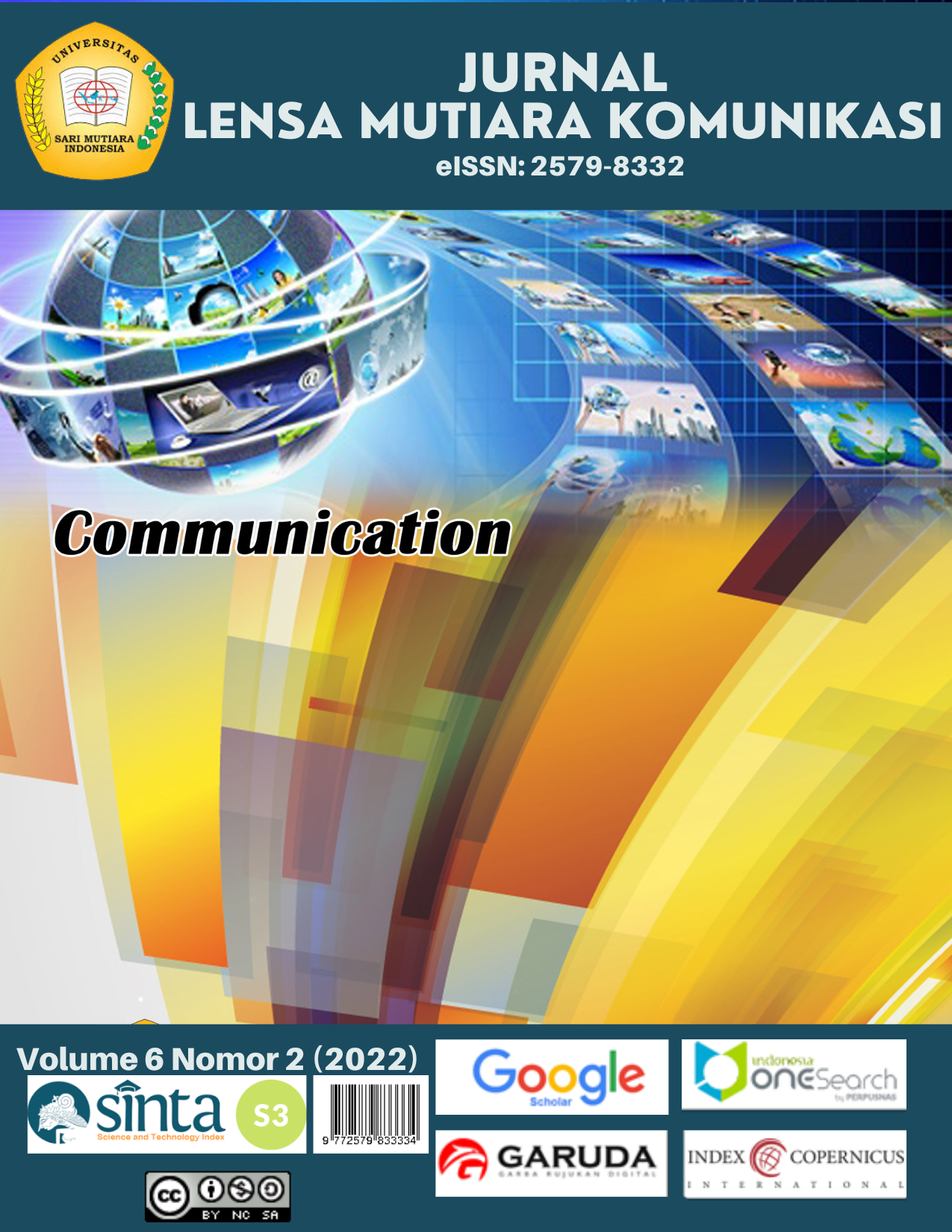Perilaku Komunikasi Guru SMA di Kota Bandung dalam Pembelajaran Daring di Masa Pandemi COVID-19
DOI:
https://doi.org/10.51544/jlmk.v6i2.3464Keywords:
Communication behavior, online learning, social media, technology adaptationAbstract
Government of Indonesia issue a social restriction policy to slow the acceleration of COVID-19 spread. One of them is online learning, which uses the method of learning from face-to-face to online meetings. It is adapted to students from elementary schools to higher education. These changes have implications for changes in teacher communication behavior in conveying learning to their students. Teachers and students who were used to face to-face learning also made adaptations. This study revealed the communication behavior of high school teachers in the city of Bandung in online learning during the COVID-19 pandemic. This study uses a qualitative method with a phenomenological approach, to explore the communication behavior of high school teachers in the city of Bandung in delivering learning materials to their students online during the COVID-19 pandemic. Data were collected through interviews with selected high school teachers. We also use related sources of literature and literature as supporting data. The results showed that the communication behavior of high school teachers in the city of Bandung in online learning during the COVID-19 pandemic was essentially conveying learning material to students using internet-based media or applications. These conditions encourage teachers how to use the applications to convey learning material to students. The teachers communication behavior with students during the COVID-19 pandemic was adaptive, according to the situations and conditions they faced. Among other things, reducing the number of subjects, shortened the study hours, and duration of learning, and giving tolerance to students in conducting assignments. Communication with fellow teachers is supportive, by helping master the use of applications. The selection of learning applications adapts to the ability of teachers and students to use it. Obstacles in online learning subsist of technical and non-technical obstacles. Teachers interpret online learning as an opportunity to learn technology and apply it to learning creatively. The conclusion of this study, online learning, changes the communication behavior of teachers in conveying learning material to their students and interpreting it as an opportunity to learn to master technology.
Downloads
References
Abdi, F. F., Hafiar, H., & Novianti, E. (2016). Perilaku Komunikasi Etnis Tionghoa Peranakan dalam Bisnis Keluarga (Studi Fenomenologi Mengenai Perilaku Komunikasi Etnis Tionghoa Peranakan dalam Bisnis Keluarga di Jakarta). Jurnal Komunikasi, 9(2), 105–118. Retrieved from http://neo-bis.trunojoyo.ac.id/komunikasi/article/view/1190
Grant, A. E., & Meadows, J. H. (2010). Communication Technology Update and Fundamentals 12th edition. Focal Press/ Elsevier.
Herold, B. (2016). Technology in Education: An Overview. Retrieved March 5, 2022, from Education Week website: https://www.edweek.org/technology/technology-in-education-an-overview/2016/02
Mastuti, E. (2016). Pemanfaatan Teknologi dalam Menyusun Evaluasi Hasil Belajar: Kelebihan dan Kelemahan Tes Online untuk Mengukur Hasil Belajar Mahasiswa. 7(1), 10–19. Retrieved from https://core.ac.uk/download/pdf/235522575.pdf
Miles, M. B., Huberman, A. M., & Saldana, J. (2014). Qualitative Data Analysis A Methods Sourcebook Edition 3 (3rd ed.). California: SAGE Publications, Inc.
Moleong, L. J. (2011). Metode Penelitian Kualitatif. Bandung: PT. Remaja Rosdakarya.
Munir. (2009). Pembelajaran Jarak Jauh Berbasis Teknologi Informasi dan Komunikasi. Bandung: Alfabeta.
Rahardja, U., Lutfiani, N., Handayani, I., & Suryaman, F. M. (2019). Motivasi belajar mahasiswa terhadap metode pembelajaran online dan elearning pada perguruan tinggi. Jurnal Sisfotenika, 9(2), 192–202.
Sari, P. (2015). Memotivasi belajar dengan menggunakan e-learning. Jurnal Ummul Qura, VI(2), 20–35.
Simonson, M., Smaldino, S., Albright, M., & Zvacek, S. (2006). Teaching and learning at a distance: foundations of distance education (3rd editio). New Jersey: Pearson.
Tabor, S. W. (2007). Narrowing the Distance: Implementing a hybrid learning model. Quarterly Review of Distance Education. IAP, 8(1), 48–49.
Vaughan, N. D. (2010). Blended Learning in Cleveland-Innes, MF. In an introduction to distance education: understanding teaching and learning in a new era. Taylor & Francis.
Wahsun. (2020). WhatsApp Paling Diminati untuk Pembelajaran Online. Retrieved March 5, 2022, from lpmpjatim.kemdikbud.go.id website: https://lpmpjatim.kemdikbud.go.id/site/detailpost/whatsapp-paling-diminati-untuk-pembelajaran-online.
Downloads
Published
How to Cite
Issue
Section
License
Copyright (c) 2022 Santi Susanti, Sukaesih Sukaesih

This work is licensed under a Creative Commons Attribution-NonCommercial-ShareAlike 4.0 International License.

















